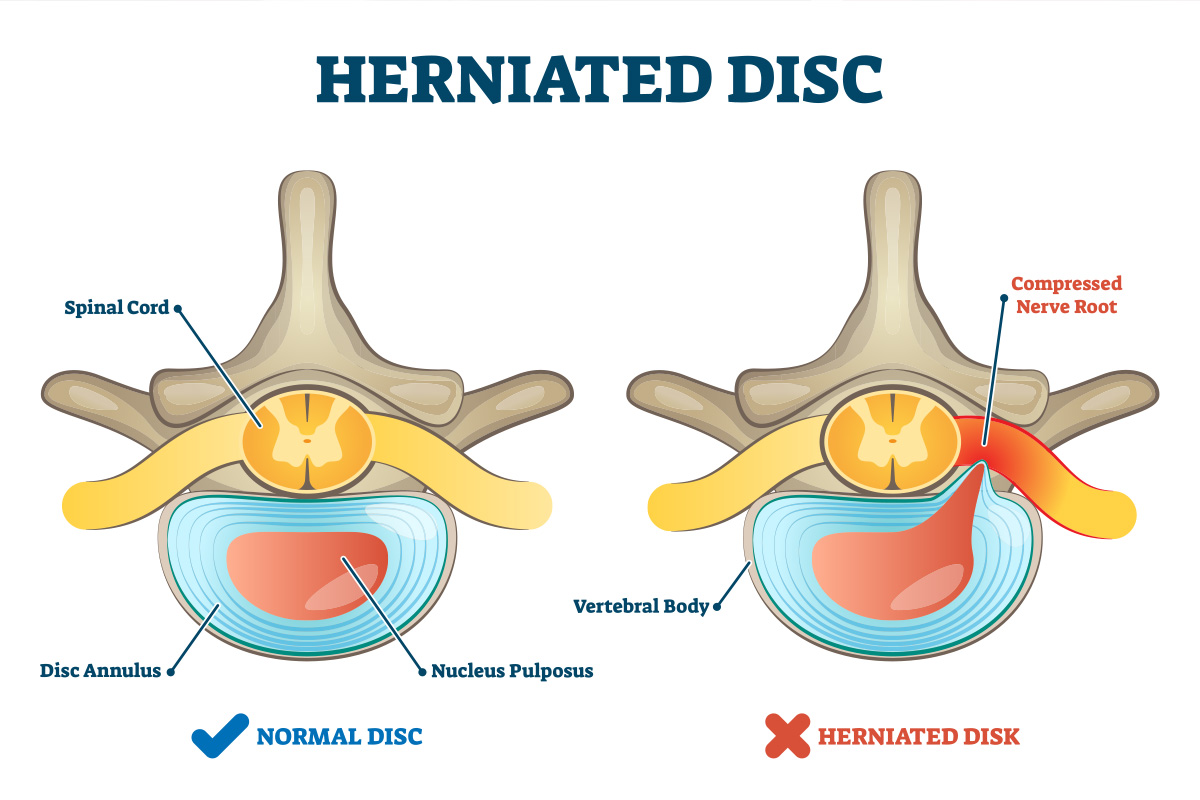Sources of Back Pain: A Herniated Disc
Spine Surgery in Buffalo, Williamsville, and Surrounding Areas
William Capicotto MD, PC is always on the leading edge of technology for minimally invasive, navigated spine surgery in Buffalo, NY and the surrounding suburbs. When you need a professional, reliable spine surgeon to restore motion to your spine, make William Capicotto MD, PC your first choice.
What is an Intervertebral Disc?
The human spinal column, or backbone, consists of a group of bones called vertebrates that protect the spinal cord. In between a person’s vertebrae are gelatinous intervertebral discs that help cushion the spine and act as shock absorbers to prevent the vertebrae from rubbing against one another. Intervertebral discs do not have a vascular supply so discs absorb nutrients through osmosis.
Intervertebral discs are comprised of 2 main parts:
Annulus Fibrosis – The Annulus is the outside layer of an intervertebral disc. This tire-like structure is composed of water and elastic collagen fibers that enhance the spine’s rotational stability and acts as a cushion against compressive stress.
Nucleus Pulposus – The nucleus is a gel-like elastic substance composed of annulus fibers, collagen, proteoglycans and more water than the annulus fibrosis. The nucleus makes up the center of an intervertebral disc and helps cushion the stress and weight between vertebrates.
What is a Herniated Disc?
A herniated disc, sometimes referred to as a slipped or ruptured disc, occurs when some of the nucleus of the disc pushes out through a crack or tear in the annulus. A herniated disc can develop in any part of the spinal column but are found more commonly in the lower back .
Symptoms of a Herniated Disc:
Some patients can have a herniated disc without even knowing, only being identified through spinal imaging, while others can experience a variety of symptoms depending on where the rupture occurs. If the disc is pressing on a nerve most individuals will typically feel symptoms on one side of their body. Symptoms of a herniated disk can include pain, weakness, numbness or tingling in the part of the body that the affected nerve controls. If a slipped disc occurs in the lower back, patients may experience symptoms in the buttocks, thigh or calf. If the neck vertebrae is affected, symptoms can present in the shoulder or arms.
Causes of a Herniated Disc:
There are a variety of factors that can cause a herniated disc to form:
Age: A herniated disc can occur naturally as a result of gradual wear and tear referred to as disk degeneration. As our bodies age discs can lose their elasticity and become more susceptible to injuries
Weight: Carrying around excess weight adds stress to the lower back resulting in complications over time
Genetics: Some individuals may have a genetic predisposition to developing a herniated disc.
Exertion and Injury: Individuals who have jobs or hobbies that require repetitive lifting, twisting, pushing, pulling or bending are more likely to develop complications, especially if you are using improper lifting techniques.
When to see a doctor
Some patients can have a herniated disc and never know it while others can develop complications. If you develop bladder or bowel dysfunction such as incontinence or are experiencing pain, weakness or a loss of sensation (numbness) that worsens over time, it is recommended that you talk to a doctor. Here at the offices of William Capicotto MD, PC we are committed to improving the day to day lives of our patients by restoring motion and reducing pain and discomfort. Give us a call today at (716) 881-0382



